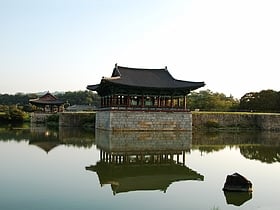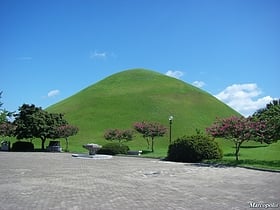Gyeongju: Archaeological Site
Places and attractions in the Archaeological site category
Categories
More categoriesAnapji Pond
Picturesque 7th-century pond and palace Anapji Pond, an exquisite archaeological site located in the historic city of Gyeongju, South Korea, is a vestige of the Silla Dynasty's opulence and architectural ingenuity. Constructed in 674 CE under the auspices of King Munmu, this artificial pond was part of the...
Banwolseong
Remnants of an ancient palace and fortress Banwolseong, also known as the Half Moon Fortress, is an ancient historical site nestled in the heart of Gyeongju, South Korea. This archaeological treasure was once the royal palace compound of the Silla Dynasty, which reigned from 57 BC to 935 AD.
Poseokjeong
The Poseokjeong site near Namsan in Gyeongju, Gyeongsangbuk-do South Korea, was built in the Unified Silla period. The site once featured a royal pavilion — said to have been the most beautiful royal villa of the time — but the only remains today is a granite water feature.
Gyeongju Historic Areas
The Gyeongju Historic Areas of South Korea were designated as a World Heritage Site by UNESCO in 2000. The protected areas encompass the ruins of temples and palaces, outdoor pagodas and statuary, and other cultural artifacts left by the Silla Kingdom.
Gold Crown Tomb
The Gold Crown Tomb, is a Silla tumulus located in modern-day Gyeongju, South Korea, the former capital of the ancient Silla Kingdom. Believed to date from the fifth or sixth century CE, the tomb was excavated in 1921.
Cheonmachong
Ancient tomb from the 5th or 6th century Cheonmachong, formerly Tomb No.155 in South Korea, is a tumulus located in Gyeongju, South Korea. The name "Cheonmachong" means Sky horse tomb. This tomb was built in the style of Silla.
Map






